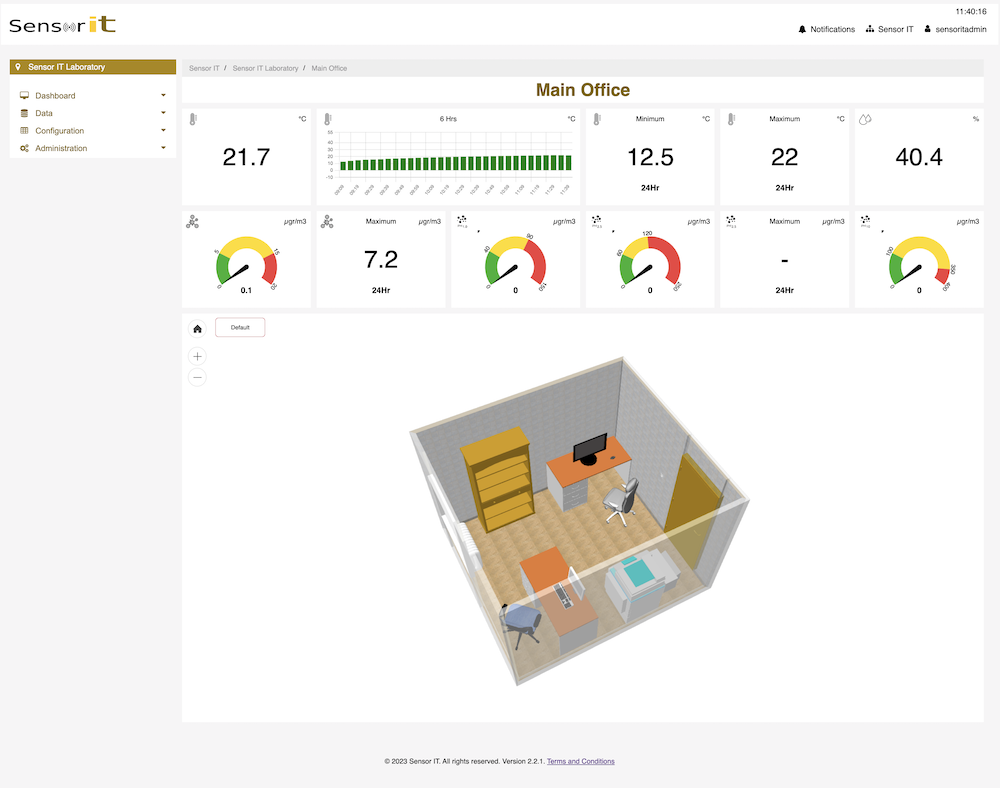Air Quality Monitor
This device is capable of connecting to a cloud-based dashboard through a simple, ubiquitous WIFI network, without the need of additional hardware – as other connected monitors do. The device is fully designed and made in the UK, and it is fitted with professional-level sensors.
As with everything we do, all key electronic components are sourced locally in the UK.
Air Temperature
A recent study out of the Medical Research Council in Glasgow (UK) has shown that temperature plays a factor in the health and the well-being of children and people with respiratory problems. Using a sample group of people in New Zealand, the researchers found that the participants’ health improved when the temperature in their homes increased. Temperature also plays a part in the development of mould indoors, so it is important to monitor it continuously. Poorly heated and ventilated homes are more likely to develop mould when the air moisture levels are sufficiently high.
Air Humidity
A good range of indoor humidity for comfort and health is between 30-60% during cooler months of the year. Mould is likely to occur if the relative humidity indoors is 70% or more for long periods of time. Keeping humidity levels under 50% also helps to minimise or control dust mites. Conversely, humidity levels below about 30% lead to dry skin and nasal passages, increasing the potential for respiratory illnesses.
Volatile Organic Compounds (VOC)
Volatile Organic Compounds (VOC) can cause several conditions that are detrimental to our health, some of them being as serious as cancer, severe headaches, nausea, injury of the central nervous system, as well as damage to liver, kidneys, nose, eyes and throat.
Particulate Matter (PM)
Particulate Matter (also called particle pollution) is the term used to describe a mixture of solid particles and liquid droplets found in the air. Some particles, such as dust, dirt, soot, or smoke, are large or dark enough to be seen with the naked eye. Others are so small they can only be detected using an electron microscope.
Particle pollution includes:
- PM10 : inhalable particles, with diameters that are generally 10 micrometres and smaller.
- PM5: fine inhalable particles, with diameters that are generally 2.5 micrometres and smaller.
- PM0: extra-fine particles, with diameters that are generally 1.0 micrometres and smaller. These can make their way into our bloodstream through the lungs. These include combustion particles, organic compounds and metals.
PM 2.5 and PM 10 are the most considered PM sizes while measuring the quality of indoor air. These two sized are known to cause respiratory tract disorders and impair vision. For reference, the average mould spore can range from 1 micron to 40 microns in size.

Cloud-based Dashboard
The monitor implements full WIFI connectivity and can send data in real-time to a cloud-based dashboard.
Through a full graphical dashboard, visual, centralised data can be monitored across entire buildings or zones. The data can also be accessed through a mobile App, compatible with Android and iOS.
NOTE: dashboard requires access fee
Customisation
The device conforms with Sensor IT’s Open Architecture Design (SOAD), which introduces a new and innovative concept for Internet of Things devices. This brings a new level of adaptability and customisation to everything we design and manufacture whereby they can be customised to meet particular requirements, as put forward by our customers.
The Air Quality Monitor could, for instance, be redesigned to integrate with the customer’s monitoring, or even their SCADA, systems, with the data transmitted adapted to their specific communication protocol.